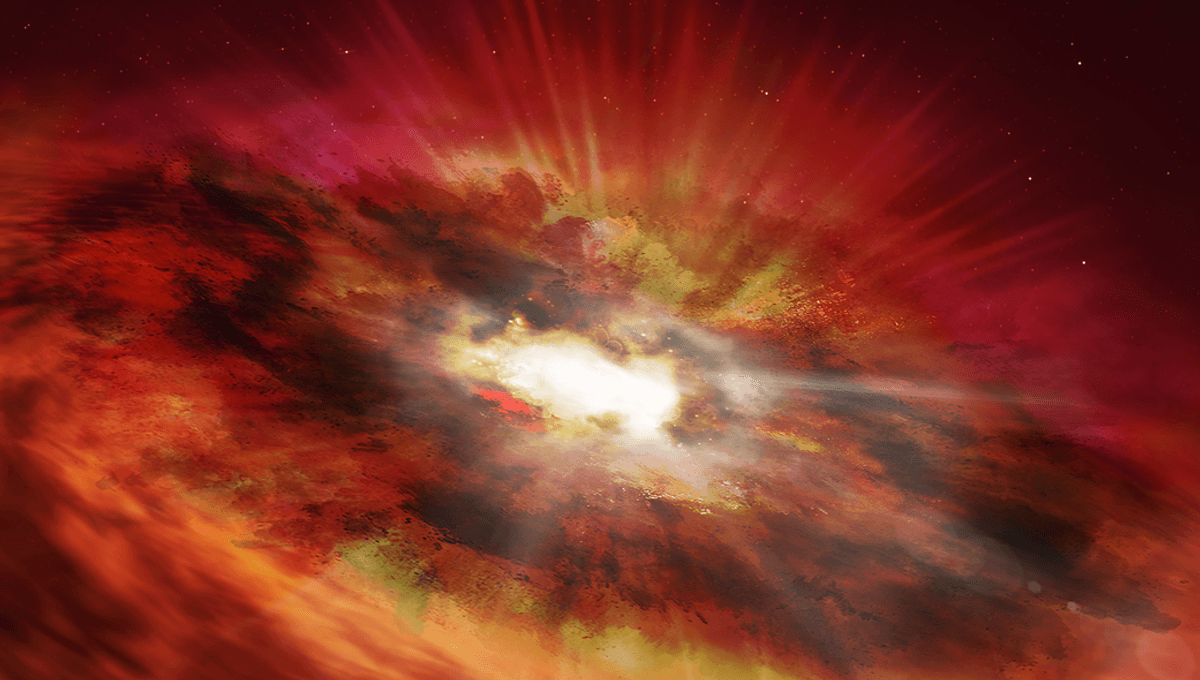
Supermassive black holes can weigh millions if not billions of times more than the Sun. They lay at the center of galaxies where they accumulate mass over billions of years. But how did they start? Astronomers are not so sure. They could begin as relatively small black holes formed in supernovae, and then somehow accumulate enough matter to become supermassive. Or they could be the result of the direct collapse of a massive cloud, forming a much bigger seed to start with.
This latter hypothesis has just found some very important evidence. Astronomers report the discovery of galaxy UHZ1 in JWST observations. The light of this galaxy is coming from when the universe was less than 500 million years old. Observations with NASA’s Chandra X-ray Observatory suggest that this galaxy has a black hole that is too big for its galaxy.
In the local universe, there is a straightforward relation that links the mass of a supermassive black hole to the mass of the stars in a galaxy and their motion. But in the past, this might have not been the case, and galaxies might have gone through an Outsize Black Hole Galaxy (OBG) phase. Cloud collapse black holes might have formed from a gas cloud of 10,000 to 100,000 times the mass of the Sun. By 500 million years after the Big Bang, OBG from cloud collapse would have a much bigger black hole compared to OBG that formed from a supernova of a massive star.
This is where the observations of UHZ1 come in. Researchers were able to collect a lot of data on this galaxy and used many simulations to compare the observations of this object with possible scenarios for its origin. The goal is to compare the light seed scenario with the heavy seed scenario – and there is a clear winner.
The combined observations from Chandra and JWST “strongly disfavors UHZ1 as originating from a light seed.” The model that best fits the observations is of a heavy seed formed by cloud collapse resulting in a black hole with a mass of 10,000 times that of the Sun. The JWST observations are also consistent with the galaxy experiencing a merger, something that is expected to happen for every galaxy but especially OBGs.
This is obviously not the last word on the matter. JWST is going to study more galaxies with accreting supermassive black holes in the early universe and help understand better where these incredible objects came from.
This research is available on the ArXiv and submitted to The Astrophysical Journal Letters.
[h/t: Astrobites]
Source Link: First-Ever “Seeds” Of Supermassive Black Holes May Have Been Discovered